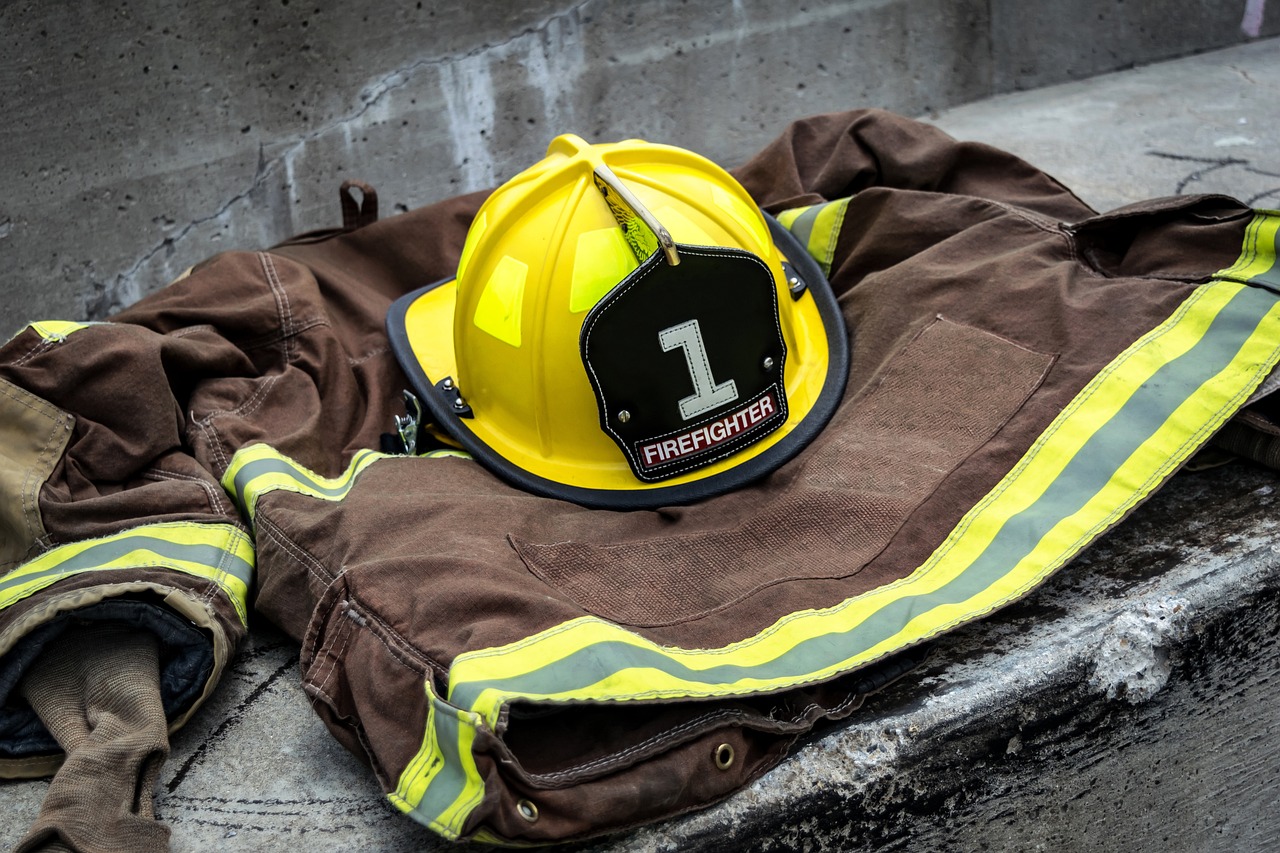How Understanding Human Behavior can Improve Safety?
In today's fast-paced world, the importance of safety cannot be overstated. Whether it’s in the workplace, at home, or in public spaces, understanding human behavior is crucial to enhancing safety measures. Why? Because safety is not just about rules and regulations; it's about how people perceive and respond to those rules. When we delve into the psychological patterns that dictate our actions, we can create more effective safety protocols that resonate with individuals on a personal level.
Imagine walking into a factory where safety signs are plastered everywhere, yet accidents still happen. This is often because the signs alone don’t address the underlying behaviors and mindsets of the workers. By understanding how people think and what drives their decisions, we can tailor our safety measures to be more effective. For instance, if employees feel that safety protocols are too cumbersome or irrelevant, they may disregard them altogether. Thus, grasping the intricacies of human behavior allows us to bridge the gap between policy and practice.
Moreover, the relationship between human behavior and safety is a two-way street. Just as behavior influences safety, safety measures can also shape behavior. When individuals feel safe, they are more likely to engage in positive behaviors that further enhance safety. This creates a virtuous cycle where improved safety leads to better compliance and a culture that values safety as a fundamental principle.
To truly harness the power of human behavior in improving safety, we must consider various factors that influence risk perception and decision-making. These include emotional responses, past experiences, and even cultural backgrounds. For example, someone who has previously experienced an accident may approach safety with heightened caution, while another individual might underestimate risks due to overconfidence. Understanding these differences is key to developing tailored safety strategies that cater to diverse groups.
Ultimately, enhancing safety through an understanding of human behavior is not a one-time effort but a continuous journey. As we gather insights and data, we can refine our approaches and create environments where safety is not just a priority but a shared value. So, how can we take these insights and implement them effectively? That’s where training and education come into play, and we'll dive deeper into this in the following sections.
Understanding how individuals perceive risk is crucial for developing effective safety protocols. This section delves into the factors influencing risk assessment and decision-making.
Cognitive biases can significantly impact safety-related decisions. This section examines common biases that lead to unsafe behaviors and how to mitigate their effects.
Social dynamics play a crucial role in shaping behavior. Here, we explore how peer pressure and group norms can either promote or hinder safety practices.
Positive peer pressure can lead to safer behaviors. This subsection discusses strategies for fostering a culture of safety within groups.
Identifying and countering negative social influences is essential. This part focuses on methods to reduce the impact of detrimental peer behaviors on safety.
Recognizing that individuals respond differently to safety measures is key. This section covers how personality traits and experiences affect safety compliance.
Effective training programs can significantly enhance safety awareness. This section discusses the importance of ongoing education in promoting safe practices.
Creating engaging and informative training programs is vital. This part outlines best practices for developing safety training that resonates with participants.
Assessing the impact of training initiatives is crucial for continuous improvement. This section discusses methods to evaluate and refine safety training programs.
- What is the importance of understanding human behavior in safety? Understanding human behavior helps tailor safety measures to better fit how people think and act, ultimately leading to improved compliance and safety outcomes.
- How can cognitive biases affect safety decisions? Cognitive biases can distort risk perception and lead individuals to make unsafe choices, often underestimating potential dangers.
- What role does social influence play in safety practices? Social influence can either encourage or discourage safe behaviors, making it essential to foster a culture of safety within groups.
- How can training programs enhance safety awareness? Effective training programs educate individuals about risks and safe practices, improving overall safety compliance.

The Psychology of Risk Perception
Understanding how individuals perceive risk is crucial for developing effective safety protocols. Imagine you're standing at the edge of a cliff, looking down at the rocky shore below. Your heart races, and your mind floods with thoughts of danger. But what if I told you that not everyone feels the same way in that situation? This variation in risk perception is shaped by a multitude of factors, including personal experiences, cultural background, and even the context in which a situation is presented. By delving into the psychology of risk perception, we can uncover the underlying patterns that dictate how people assess danger and make decisions.
At its core, risk perception is influenced by both cognitive and emotional factors. Cognitive aspects involve the analytical side of our brains, where we weigh the probabilities and consequences of an event. For instance, someone may logically assess that driving during a rainstorm increases the chance of an accident. However, emotional factors, such as fear or past trauma, can skew this perception. A person who experienced a severe car crash may view driving in the rain as a significantly higher risk than someone who has never had a negative driving experience.
Moreover, the availability heuristic plays a pivotal role in how we gauge risk. This psychological shortcut leads individuals to judge the likelihood of events based on how easily examples come to mind. For example, if you recently heard about a plane crash on the news, you might overestimate the dangers of flying, even though statistically, it remains one of the safest modes of transportation. This phenomenon illustrates how our minds can trick us, often leading to irrational fears and decision-making.
Another crucial factor is the framing effect. How information is presented can dramatically alter our perception of risk. For instance, if a safety campaign emphasizes the percentage of people who survive a certain risky behavior, individuals may feel more inclined to engage in that behavior. Conversely, if the same campaign highlights the percentage of individuals who suffer negative consequences, the perception of risk increases. This highlights the importance of strategic communication in safety messaging.
To further understand these dynamics, consider the following table that outlines key factors influencing risk perception:
| Factor | Description |
|---|---|
| Cognitive Biases | Skewed thinking patterns that affect judgment and decision-making. |
| Emotional Responses | Feelings that can amplify or diminish perceived risk. |
| Social Influences | Peer behaviors and societal norms that shape individual perceptions. |
| Information Framing | The way information is presented can influence risk assessment. |
In conclusion, understanding the psychology of risk perception is essential for creating effective safety measures. By recognizing the cognitive and emotional factors that influence how individuals assess risk, we can tailor safety protocols that resonate with people's perceptions and lead to better decision-making. This knowledge not only enhances safety but also empowers individuals to take more responsible actions in their daily lives.

When it comes to safety, our brains can sometimes play tricks on us. This is where cognitive biases come into play, subtly influencing our decisions and behaviors in ways we might not even realize. These biases are mental shortcuts that our brains use to make quick judgments, but they can lead to unsafe choices if we’re not careful. For instance, the optimism bias makes us believe that bad things are less likely to happen to us compared to others. You might think, “I’m a good driver; I won’t get into an accident,” even when statistics show that accidents can happen to anyone. This kind of thinking can lead to risky behaviors, such as texting while driving or ignoring safety protocols because we feel invincible.
Another common bias is the confirmation bias, where we tend to seek out information that supports our existing beliefs while ignoring evidence that contradicts them. For example, if someone believes that a particular safety measure is unnecessary, they might only pay attention to stories that confirm this belief and overlook data showing its importance. This can create a dangerous ripple effect, as one person's disregard for safety can influence others, leading to a culture where safety is undervalued.
To effectively address these cognitive biases, it's essential to implement strategies that promote awareness and critical thinking. Here are a few tactics:
- Education and Training: Regular training sessions that highlight these biases can help individuals recognize their own thought patterns and encourage safer decision-making.
- Encouraging Open Dialogue: Creating an environment where employees feel comfortable discussing safety concerns can help challenge existing biases. When people share their experiences and knowledge, it can lead to a more comprehensive understanding of safety.
- Utilizing Data: Presenting clear, factual data about safety risks and benefits can counteract biases. When individuals see the real numbers, they may be more inclined to take safety seriously.
Moreover, understanding the impact of these biases on safety is just the first step. Organizations can also implement behavioral nudges to help steer employees towards safer choices. For instance, placing reminders about safety protocols in prominent locations can serve as a gentle push towards compliance. Think of it like putting a seatbelt reminder in your car; it’s a small nudge that can lead to a significant change in behavior.
In summary, cognitive biases can significantly affect our safety-related decisions, often leading us to underestimate risks or overlook safety protocols. By recognizing these biases and implementing strategies to mitigate their effects, we can create a safer environment for everyone. Just as a chain is only as strong as its weakest link, our safety practices are only as effective as our awareness of the cognitive biases that can undermine them.
- What are cognitive biases? Cognitive biases are systematic patterns of deviation from norm or rationality in judgment, which can lead to illogical conclusions or decisions.
- How do cognitive biases affect safety? They can lead individuals to underestimate risks or ignore safety protocols, resulting in unsafe behaviors.
- What can organizations do to combat cognitive biases? Organizations can provide education, encourage open dialogue, and use data to highlight the importance of safety measures.

When we think about safety, we often focus on protocols, equipment, and regulations. However, one of the most powerful yet overlooked factors is social influence. It’s fascinating how our behavior can be swayed by those around us. Imagine you’re at a construction site, and everyone is wearing their hard hats diligently. You might feel inclined to put yours on too. Why? Because of the subtle pressure from your peers. This phenomenon is called social influence, and it can either bolster or undermine safety practices depending on the group dynamics.
Social influence operates through various mechanisms. For instance, when individuals are part of a group, they often conform to the behaviors exhibited by others. This can lead to a bandwagon effect, where people adopt behaviors simply because they see others doing it. In a safety context, this can mean that if one person skips a safety measure, others might follow suit, thinking, “If they’re not worried, why should I be?”
Conversely, positive social influence can create a strong culture of safety. When group members actively promote safety measures, it can lead to a collective commitment to safe practices. For example, if a team regularly discusses safety protocols and celebrates adherence to them, it fosters an environment where everyone feels responsible for each other's safety. This sense of shared accountability can be incredibly powerful.
To harness the power of social influence effectively, organizations can implement several strategies:
- Encourage Open Communication: Create an environment where team members feel comfortable discussing safety concerns without fear of judgment.
- Lead by Example: Leaders should model safe behavior. When employees see their supervisors prioritizing safety, they are more likely to do the same.
- Recognize and Reward Safe Behavior: Acknowledging individuals or teams who consistently follow safety protocols can motivate others to do the same.
However, it’s essential to be aware of negative social influences as well. These can manifest in various forms, such as peer pressure to take shortcuts or disregard safety measures. Addressing these influences is crucial for maintaining a safe environment. For instance, if a group member consistently undermines safety protocols, it’s vital to address this behavior directly and constructively. This might involve one-on-one discussions or even broader team meetings to reinforce the importance of safety.
In summary, social influence is a double-edged sword when it comes to safety. It can either reinforce safe behaviors or lead to dangerous shortcuts. By understanding and leveraging the dynamics of social influence, organizations can create a culture that prioritizes safety, ultimately leading to a safer and more productive environment for everyone involved.

When we think about peer pressure, our minds often drift to the negative aspects—those moments when friends influence us to take risks or make poor choices. But what if I told you that peer pressure could also be a powerful ally in promoting safety? Yes, you heard that right! Positive peer pressure can create an environment where safe behaviors are not just encouraged but celebrated. Imagine a workplace where employees motivate each other to wear safety gear or a community where neighbors remind each other to drive cautiously. This kind of atmosphere can significantly reduce accidents and injuries.
So, how can we foster this positive influence? First and foremost, communication is key. Open discussions about safety practices can help everyone feel involved and valued. When people share their experiences and insights, it builds a sense of community. For example, consider crafting a safety charter that outlines specific safety goals and responsibilities for everyone. This can create a shared commitment to safety, making it easier for individuals to remind one another about best practices without feeling confrontational.
Another effective strategy is to recognize and reward safe behaviors. Acknowledging individuals or teams that consistently prioritize safety can inspire others to follow suit. Think of it as a safety leaderboard—where people can see their peers being recognized for their efforts. This not only boosts morale but also reinforces the idea that safety is a collective responsibility. In fact, studies have shown that recognition can lead to a 20% increase in compliance with safety protocols!
Additionally, you can leverage social media and other platforms to create a culture of safety. Sharing stories, tips, and even challenges related to safety can engage a wider audience. For instance, a safety challenge that encourages employees to post pictures of themselves using safety equipment can go viral, leading to a ripple effect of positive peer reinforcement. Remember, the more fun and engaging you make safety, the more likely people are to embrace it.
In conclusion, while peer pressure often gets a bad rap, it can be transformed into a force for good. By fostering open communication, recognizing safe behaviors, and utilizing social platforms, we can create a culture where safety is not just a requirement but a shared value. So, let’s turn the tide on peer pressure and make it a powerful tool for promoting safety in our communities and workplaces!
- What is positive peer pressure? Positive peer pressure occurs when individuals influence each other to adopt safe behaviors and make better choices, rather than taking risks.
- How can I encourage positive peer pressure in my workplace? Open communication, recognition of safe practices, and engaging social initiatives can help cultivate a culture of safety.
- Can positive peer pressure really make a difference? Absolutely! Studies show that recognizing and rewarding safe behaviors can significantly increase compliance with safety protocols.

When it comes to safety, negative influences can be like a dark cloud looming over a sunny day. They can creep in subtly, often unnoticed, and lead individuals to make choices that compromise their well-being. Addressing these negative influences is not just important; it's essential for fostering a culture of safety. But how do we do this? First, we need to recognize that these influences can stem from various sources, including peer pressure, workplace culture, and even social media. Each of these can create an environment where unsafe behaviors are normalized, leading individuals to disregard safety protocols.
One effective strategy to combat these detrimental influences is to promote open communication. When individuals feel comfortable discussing their concerns about safety, they are more likely to voice objections to risky behaviors. For example, in a workplace setting, holding regular safety meetings can provide a platform for employees to express their thoughts and experiences. This not only helps identify negative influences but also encourages a collective commitment to safety. Moreover, it’s crucial to identify and highlight the behavior of individuals who consistently prioritize safety. By showcasing these role models, organizations can create a ripple effect that encourages others to follow suit.
Another tactic is to implement clear consequences for unsafe behaviors. When people understand that there are repercussions for ignoring safety protocols, they are more likely to think twice before engaging in risky actions. This doesn’t mean instilling fear; rather, it’s about creating a sense of accountability. For instance, a construction site might have a policy where any safety violations lead to mandatory retraining sessions. This not only reinforces the importance of safety but also provides an opportunity for individuals to learn from their mistakes.
It’s also important to consider the impact of social dynamics. Group norms can sometimes overshadow individual judgment. To counteract this, organizations can foster a culture that celebrates safety. This might include recognizing teams or individuals who consistently demonstrate safe practices. By creating a positive reinforcement loop, the focus shifts from the negative influences to the positive behaviors that lead to a safer environment.
In summary, addressing negative influences requires a multifaceted approach. By promoting open dialogue, establishing clear consequences, and celebrating safe behaviors, organizations can significantly reduce the impact of detrimental peer influences. It's all about creating an environment where safety is not just a protocol but a shared value. After all, when safety becomes a collective responsibility, everyone benefits.
- What are some common negative influences on safety? Negative influences can come from peer pressure, workplace culture, and social media, among others.
- How can open communication improve safety? Open communication allows individuals to voice concerns and share experiences, leading to a more safety-conscious environment.
- Why is it important to recognize positive safety behaviors? Recognizing positive behaviors encourages others to adopt similar practices, fostering a culture of safety.

When it comes to safety, one size definitely does not fit all. Each person has unique characteristics that influence how they respond to safety measures. Think about it: why do some individuals follow safety protocols diligently while others seem to disregard them entirely? This disparity can be attributed to a variety of factors, including personality traits, past experiences, and even cultural backgrounds. Understanding these individual differences is crucial for creating effective safety strategies that resonate with everyone.
For instance, some people are naturally more cautious, while others might be risk-takers. This can be likened to the difference between a tortoise and a hare; the tortoise takes its time, ensuring every step is safe, whereas the hare might rush ahead, ignoring potential hazards. This analogy illustrates how personality traits can influence safety behavior. Research shows that individuals who score high on traits like conscientiousness are more likely to adhere to safety guidelines compared to those who are more impulsive.
Moreover, past experiences also shape how individuals perceive and respond to safety protocols. Someone who has previously experienced a workplace accident may be more vigilant and compliant with safety measures than someone who has never faced a similar situation. This is a classic case of learning from experience. It's essential to recognize these differences and tailor safety messages accordingly. For example, using real-life stories and testimonials can help resonate with those who might otherwise be indifferent to safety protocols.
In addition to personality and past experiences, cultural influences can significantly affect safety behavior. Different cultures have varying attitudes towards risk and safety. In some cultures, there may be a strong emphasis on communal responsibility, where individuals feel a collective duty to adhere to safety practices. In contrast, other cultures may prioritize individual freedom, leading to a more relaxed approach to safety. Understanding these cultural nuances is vital for organizations aiming to implement effective safety measures across diverse teams.
To sum it up, recognizing that individual differences play a pivotal role in safety compliance is essential for creating a culture of safety. By acknowledging these differences, organizations can develop targeted strategies that cater to the unique needs of their workforce, ultimately fostering a safer environment for everyone. As we move forward, it's crucial to keep these factors in mind when designing safety protocols and training programs.
- Why are individual differences important in safety compliance?
Individual differences affect how people perceive risk, follow safety protocols, and respond to training. Understanding these differences helps organizations tailor their safety measures effectively. - How can organizations address individual differences in behavior?
Organizations can conduct assessments to understand their workforce's personality traits and experiences, then create targeted training and communication strategies that resonate with different individuals. - What role does culture play in safety behavior?
Cultural backgrounds influence attitudes towards risk and safety, affecting how individuals comply with safety measures. Recognizing these influences can help organizations implement more effective safety practices.

When it comes to enhancing safety in any environment, training and education are your best friends. Think of them as the sturdy foundation of a house; without a solid base, everything else is at risk of collapsing. By investing time and resources into effective training programs, organizations not only equip individuals with the necessary skills but also foster a culture of safety that permeates every level of operation. But what does effective training look like, and why is it so crucial?
First and foremost, it's essential to understand that safety training is not a one-size-fits-all solution. Different environments—be it a construction site, a corporate office, or a healthcare facility—come with their unique challenges and risks. Therefore, tailoring training programs to meet specific needs is vital. For instance, a construction worker may need to focus on fall prevention and equipment handling, while an office worker might benefit more from ergonomics and emergency evacuation procedures. This tailored approach ensures that the training is relevant and engaging, which in turn boosts retention and application of the learned skills.
Moreover, the way training is delivered can significantly impact its effectiveness. Traditional methods, like lectures, can sometimes feel dull and uninspiring. Instead, incorporating interactive elements such as simulations, role-playing, and hands-on activities can make a world of difference. Imagine a firefighter training in a controlled environment that mimics real-life scenarios; the experience is invaluable and prepares them for the unpredictability of their job. This immersive approach not only keeps participants engaged but also helps them to internalize safety protocols more effectively.
Another critical aspect of safety training is the inclusion of ongoing education. Safety is not a static field; it evolves as new technologies and practices emerge. Regularly updating training materials and conducting refresher courses ensures that individuals remain informed about the latest safety standards and practices. For example, a company might implement a quarterly training session to introduce new safety tools or protocols, ensuring everyone is on the same page. This commitment to continuous learning reflects an organization's dedication to safety and can significantly reduce incidents.
To measure the effectiveness of these training programs, organizations must establish clear metrics. Tracking incident reports, conducting surveys, and evaluating employee performance can provide valuable insights into how well training is being absorbed and applied. For instance, if a particular department sees a noticeable drop in safety incidents after implementing a new training program, it’s a strong indicator that the program is working. Additionally, feedback from participants can help refine future training efforts, making them even more effective.
In conclusion, the importance of training and education in improving safety cannot be overstated. By designing engaging, tailored, and ongoing training programs, organizations not only enhance compliance with safety measures but also cultivate a culture where safety is a shared responsibility. Remember, a well-trained team is your best defense against accidents and injuries. So, what are you waiting for? Invest in your team's safety today!
- What is the best way to deliver safety training?
Interactive methods such as simulations, role-playing, and hands-on activities tend to be more effective than traditional lectures. - How often should safety training be updated?
Regular updates, ideally on a quarterly basis, help keep employees informed about the latest safety standards and practices. - How can the effectiveness of safety training be measured?
Organizations can track incident reports, conduct surveys, and evaluate employee performance to assess the impact of training programs.

When it comes to enhancing safety awareness, the design of training programs plays a pivotal role. It's not just about throwing information at participants; it's about creating an engaging and interactive learning experience that sticks. Think of training as a journey rather than a destination. If you want your audience to remember the safety protocols, you need to make the journey enjoyable and relatable.
Firstly, consider the learning styles of your participants. People absorb information in different ways, and a one-size-fits-all approach often falls flat. Incorporating a variety of teaching methods can cater to visual, auditory, and kinesthetic learners. For instance, using videos or infographics can help visual learners, while group discussions and role-playing can engage auditory and kinesthetic learners respectively. This multi-faceted approach not only keeps the training lively but also ensures that everyone walks away with the knowledge they need.
Another crucial aspect is the relevance of the content. Tailoring the training to reflect real-world scenarios that participants encounter daily can significantly improve retention. For example, if you're training employees in a manufacturing plant, using case studies from their specific environment can help them relate better. When the content resonates with their experiences, they are more likely to remember and apply what they've learned.
Moreover, incorporating interactive elements into your training can transform the learning experience. Activities such as quizzes, simulations, and hands-on exercises can enhance engagement and encourage active participation. This not only makes learning fun but also reinforces the material being taught. For instance, conducting a fire drill as part of the training allows participants to practice what they've learned in a safe environment, solidifying their understanding and preparedness.
Additionally, providing opportunities for feedback and discussion is essential. Creating a safe space where participants feel comfortable sharing their thoughts and experiences can lead to valuable insights. This dialogue not only enhances learning but also fosters a sense of community and shared responsibility for safety. Encouraging questions and discussions can also help clarify any misconceptions about safety protocols, ensuring everyone is on the same page.
| Key Elements of Effective Training Programs | Description |
|---|---|
| Engagement | Utilize various teaching methods to cater to different learning styles. |
| Relevance | Tailor content to reflect real-world scenarios participants face. |
| Interactivity | Incorporate quizzes, simulations, and hands-on activities. |
| Feedback | Create a safe space for discussion and sharing experiences. |
Finally, don't forget the importance of ongoing support and resources. Training shouldn't end once the session is over. Providing participants with access to additional resources, such as manuals, online courses, or follow-up workshops, can help reinforce their learning. This ongoing support shows your commitment to their safety and encourages a culture of continuous improvement.
In summary, designing effective training programs requires a thoughtful approach that considers the diverse needs of participants. By focusing on engagement, relevance, interactivity, feedback, and ongoing support, you can create a training experience that not only informs but also inspires a commitment to safety.
- What are the main components of an effective training program?
An effective training program should include engagement strategies, relevant content, interactive elements, opportunities for feedback, and ongoing support. - How can I make safety training more engaging?
Incorporate various teaching methods, use real-world scenarios, and include interactive activities like quizzes and simulations. - Why is feedback important in training?
Feedback allows participants to clarify doubts, share experiences, and fosters a sense of community, enhancing the overall learning experience.

When it comes to ensuring safety in any environment, the effectiveness of training programs cannot be overlooked. Evaluating how well these programs work is like checking the pulse of your safety culture. If the training isn't hitting the mark, then all those hours spent in the classroom or online could be for naught. So, how do we gauge whether our training initiatives are truly making a difference?
One of the first steps in evaluating training effectiveness is to establish clear objectives. What do you want your participants to learn? Are you aiming for a specific reduction in accidents or an increase in safety compliance? Once you have defined your goals, you can use various methods to assess whether your training is achieving them.
One popular approach is the Kirkpatrick Model, which breaks down evaluation into four levels:
| Level | Description |
|---|---|
| 1. Reaction | How participants felt about the training. Did they find it engaging and relevant? |
| 2. Learning | The extent to which participants acquired the intended knowledge and skills. |
| 3. Behavior | Whether participants are applying what they learned in their daily tasks. |
| 4. Results | The final impact on the organization, such as reduced incidents or improved safety culture. |
Using this model, you can create a comprehensive evaluation strategy that not only measures immediate reactions but also long-term outcomes. For instance, after a training session, you might administer a survey to gauge participants' reactions (Level 1). Then, follow up with assessments or practical exercises to see what they've learned (Level 2). Over time, observe workplace behavior to see if there's a noticeable change in safety practices (Level 3), and finally, analyze incident reports or safety metrics to measure real-world results (Level 4).
Another effective way to evaluate training effectiveness is through feedback loops. Gathering input from participants and their supervisors can provide valuable insights into the training's impact. Consider conducting interviews or focus groups to dive deeper into what worked and what didn’t. This qualitative data can complement your quantitative assessments and help you refine future training programs.
In addition, leveraging technology can enhance your evaluation process. Many organizations now utilize Learning Management Systems (LMS) that track participant progress and engagement. These systems can provide detailed analytics that help you assess training effectiveness in real-time, making it easier to adjust your approach as needed.
Ultimately, evaluating training effectiveness is not a one-time event; it’s an ongoing commitment to safety. By continuously assessing and refining your training programs based on feedback and measurable outcomes, you can foster a culture of safety that evolves and improves over time.
- Why is evaluating training effectiveness important? Evaluating training effectiveness helps ensure that safety programs are achieving their intended outcomes, leading to a safer workplace.
- What methods can be used to evaluate training? Methods include surveys, assessments, observation of behavior changes, and analysis of incident reports.
- How often should training effectiveness be evaluated? Training effectiveness should be evaluated continuously, with formal assessments scheduled periodically.
Frequently Asked Questions
- How does understanding human behavior enhance safety measures?
Understanding human behavior allows us to identify psychological patterns that can lead to unsafe practices. By analyzing these behaviors, we can design safety protocols that are more effective and tailored to how people actually think and act in various situations.
- What factors influence risk perception?
Risk perception is influenced by a variety of factors including personal experiences, cultural background, and even emotional responses. People may assess risks differently based on their past encounters or the information they receive from social groups.
- What are cognitive biases, and how do they affect safety?
Cognitive biases are systematic patterns of deviation from norm or rationality in judgment. These biases can lead individuals to underestimate risks or overestimate their ability to handle dangerous situations, ultimately compromising safety.
- How can social influence impact safety behaviors?
Social influence can significantly shape our behaviors. For instance, peer pressure can either encourage safe practices when positive or lead to risky behaviors when negative. Understanding these dynamics is crucial for promoting a culture of safety.
- What is positive peer pressure, and how can it be encouraged?
Positive peer pressure occurs when individuals encourage each other to engage in safe behaviors. This can be fostered by creating environments where safety is valued and recognized, such as rewarding safe practices or sharing success stories among peers.
- How can negative social influences be addressed?
Addressing negative social influences involves identifying harmful behaviors and promoting awareness of their risks. Strategies may include open discussions about safety, re-evaluating group norms, and providing support for individuals who resist unsafe practices.
- Why are individual differences important in safety compliance?
Individual differences, such as personality traits and past experiences, can greatly affect how people respond to safety measures. Recognizing these differences helps in tailoring safety protocols that resonate with diverse groups, ensuring better compliance.
- What role does training play in improving safety awareness?
Training is essential for enhancing safety awareness. It equips individuals with knowledge and skills necessary to recognize hazards and respond appropriately. Ongoing education ensures that safety practices remain relevant and effective.
- How can effective training programs be designed?
Effective training programs should be engaging and informative. This can be achieved through interactive activities, real-life scenarios, and clear communication of safety protocols. Tailoring content to the audience’s needs also enhances engagement.
- What methods can be used to evaluate training effectiveness?
Evaluating training effectiveness can involve surveys, assessments, and observation of behavior changes post-training. Continuous feedback and refinement of training programs ensure they remain impactful and aligned with safety goals.



















